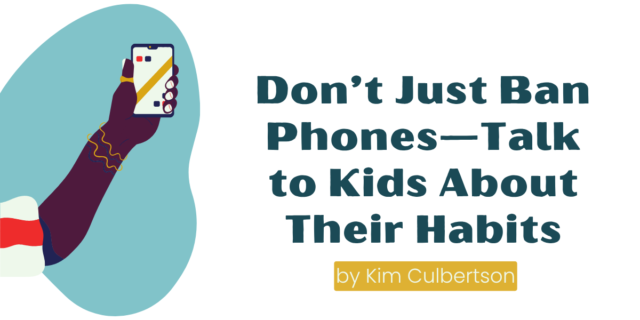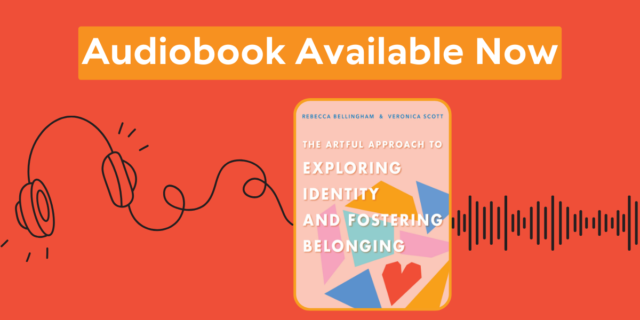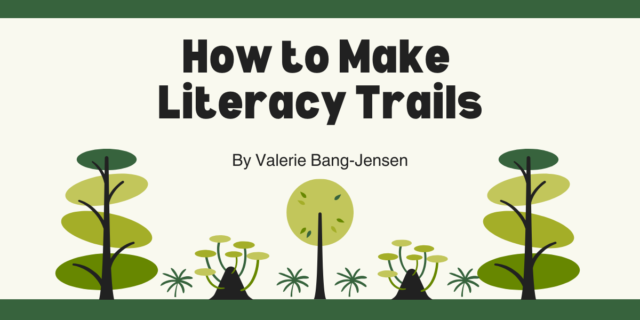
This Women’s History Month, we asked Heinemann authors the following questions: Who was the most impactful female educator in your life? How did they influence you? What would you say to them now?
Below are their responses.
From Valerie Bang-Jensen
On the first day of sixth grade, our teacher, Sunny Rhia, invited us to use wood, saws, and hammers to construct our own art toolboxes that we would use for a year-long study of The History of People Through Art. Equipped with books, resources and building materials, we started off studying the Lascaux cave paintings, and then created and painted our own stucco “cave walls.” Next, we built frames with fresh plaster and painted them with watercolors as we studied Egyptian frescos. Greek vases, Japanese wood-carved prints, and contemporary art followed, ending with a study of cartoons as social criticism. At the end of each topic, we compiled what we had learned into a chapter for our own books, which we bound at the end of the year.
Miss Rhia launched my understanding of the relationship between art and culture and the importance of expression in all of its forms. When Venice flooded in the mid-1960’s, our class recognized the importance of saving the damaged art and held a bake sale in order to support the Committee for the Rescue of Italian Art, which awakened our awareness of activism. The year with Miss Rhia shaped and enriched my travel experiences; art museums are always at the top of my itineraries. This year-long curriculum also influenced me deeply as an educator. The combination of hands-on, physical work, reading, and writing about the topics showed me how important this loop is for deep learning.
Thank you, Miss Rhia, for helping me understand that literacy appears in many ways.
Valerie Bang-Jensen is the author of Literacy Moves Outdoors.
Just Love Them by Kim Culbertson
This might seem like cheating, but my most influential female educator is my mom. She taught high school math for over 30 years, but it was her pedagogy around working with kids that most influenced me.
My mom loved her students. Full stop. Every single one of them. I remember taking the bus to her classroom after school where she would spend hours tutoring them. I would linger by her desk late into the night watching her grade papers, hearing her say things like “oh, I think he’s finally getting this!” while drawing a little smiley face next to a problem. She told me that there was no such thing as a “bad kid.” Many of the so-called “tough” kids just weren’t built for the narrow system we offer them. The most important thing, she would insist, was that you care about them as whole people. “Just love them,” she would say. Their goals don’t have to fit the system’s goals. Try to understand what they want and need.
Growing up, I would often get stopped around town so someone could tell me, “Your mom was the best teacher I ever had.” This still happens. I often get Facebook messages from people who assure me she lowkey saved their lives in high school. “I was a mess,” a recent former student wrote. “Your mom made me feel special.” You were, I write back. My mom truly loved her students for who they were, not who they were supposed to be. I have made this belief the foundation of my own teaching and will always be grateful for the woman who taught it to me through her life’s work.
Kim Culbertson is the author of the recent 100-Word Stories.
From Carl Anderson
When I nearly failed a writing assignment about Charles Dickens’ A Tale of Two Cities in 10th grade, my mom, Helen Anderson, a high school English teacher in our hometown of Massapequa, Long Island, stepped in. From then on, all the way through the end of my high school years, my mom sat down and conferred with me about every “composition” my English teachers assigned. In several years’ worth of conferences at our kitchen table, she taught me many things about writing: how to write a good thesis statement, how to write a topic sentence that signals where a paragraph is going, how to punctuate complex sentences, and much more.
Years later, I became an English teacher myself, and taught writing in middle schools in New York City, Kentucky and Illinois. Of course, while my students were writing, I sat next to them and conferred with them. Out of this experience, I wrote my first book, How’s It Going? A Practical Guide to Conferring with Student Writers. I think the main thing that drove me to write the book was that I wanted to give every student the same kind of individualized, loving writing support that my mom had given me at our kitchen table. After all, not every student has the good fortune of having a high school English teacher mom like mine!
My mom thoroughly enjoyed reading How’s It Going? I think she was proud that the conferring she did with me had an impact on my development as a writer—and later, on the writing lives of children in classrooms everywhere.
Carl Anderson is the author of the recent How to Become a Better Writing Teacher.
From Tanny McGregor
Without saying a word, she placed a fifteen-cent stamp on the corner of my desk. I was too shy to ask why until a few minutes later when the chaos of class change kept me from drawing attention to myself. Heart beating fast, I made my way to the desk of Ms. Landis, my seventh grade English teacher. She looked up with smiling eyes, expecting me.
It was 1978. At twelve years old, I already loved to write, but for my eyes only. As for confidence, I had little, but a single stamp would change that.
Ms. Landis told me that she had been thinking about my writing, especially the original poems I had contributed to our class poetry project. She said I showed promise and that she knew of a youth poetry magazine that was accepting submissions. With her encouragement, I used that stamp to take a chance. A few weeks later I received a letter of congratulations and a check for twenty-five dollars. Two of my poems would appear in the spring issue.
Ms. Landis likely taught more than a hundred seventh graders each day. I don’t think I stood out in any way, academically or otherwise. Yet she knew I needed that stamp, I needed a nudge, I needed her. That spring I began to notice how she nurtured so many other kids, too. She saw them like she saw me.
This is my love letter to you, Ms. Landis. Did you know I’ve authored/co-authored four books? Did you know I have a daily practice of journaling? Did you know that fifteen cents could make such a big difference? I think you did.
Tanny McGregor is the author of Ink & Ideas.
From Georgia Heard
My mother was the most influential teacher in my life. She passed away in August, and every day, I am reminded of the lifelong gift she gave me—the love of books and learning.
She was the librarian at the school my sisters and I attended, a reader in the deepest sense—devouring everything from newspapers to novels, always hungry for knowledge, always ready to lose herself in the pages of a book. Many of my memories of her are quiet ones: the glow of a lamp at night, her sitting in her rocking chair, immersed in a book.
But she didn’t just read—she shared. She made the library a place of possibility, where books weren’t just objects on a shelf but doors waiting to be opened. She showed me that words have the power to shape a life, that books hold the deepest truths, and that through reading, we can come to understand not just the world but ourselves.
If I could tell her one thing now, it would be this: Every time I open a book, every time I help someone else find the right words, I feel you with me. Thank you, Mom, for nurturing my love of language and for showing me that books are a way to navigate the world -- a way to keep learning, questioning and discovering. And most of all, a way to stay connected to you.
Georgia Heard is the author of Awakening the Heart, second edition.
From Veronica Scott
In elementary school, I once had this magical, extraordinary experience (as a little Black, Chicana girl growing up in Texas) of having not one, but four Black women as teachers all in one year. Each teacher was brilliant. Each teacher was a gem. And sure it’s not the most important point, but I’m gonna say it anyway: each teacher was stunning. Maybe, given what the 90’s was teaching me about who got to be beautiful, that mattered to my little self more than I could have understood at the time. Today, if I could, I would invite these brilliant, stunning, gems over for cake and champagne. I would raise my glass and cut them each a generous slice and say:
Here’s to you, Ms. Paris, my kindergarten teacher. Here’s to your cute curls and skin like creamy coffee. From you, I learned how to count to 100. How to pick up a pencil and begin to tell my story. How to pay close attention when someone has something really special that they just can’t wait to show or to tell. From you, I learned how to plant a seed. And a few weeks later, I learned just what a fresh radish tasted like.
Here’s to you, Señora Enrique, my Spanish teacher. Here’s to your high cheekbones and skin like chocolate caliente. From you, I learned how to speak the language of mi mamá y mi abuelita y mis ancestors. I learned that Celia Cruz was singing to the people that life is beautiful. I learned how to celebrate de colores en la primavera. And how to craft a bit of blue and green yarn into ojos de dios. From you, I learned how to make something hopeful with our little hands.
Here’s to you, Ms. Gilmore, my art teacher. Here’s to your short-cropped fro (so fresh and so chic!) and skin like cocoa powder. From you, I learned about Frida Kahlo and the impressionists and the art car parade. I learned how to look closely. How to create from scratch. How to use my fingers to blend oil pastels into warm gold and deep brown. From you, I learned how to make my first self-portrait.
Here’s to you, Ms. Hicks, my music teacher. Here’s to your glossy red nails and skin like caramel. From you, I learned how to lift my voice with confidence. How to listen carefully, quietly, generously to all the voices around me. I learned how to clap along when the music moved me. How to never be afraid of bright spotlights. How to make enough space for everyone on stage. From you, I learned that when many voices come together, it’s often more powerful, more beautiful than one.
Veronica is the co-author of the newly released The Artful Approach to Exploring Identity and Fostering Belonging.
Ofelia, from Luz Herrara
She defied everything I thought I knew about being an academic. She embodied who I aspired to become—and so much more. Not only is she the most renowned name in bilingual education and the most brilliant scholar I’ve ever met, but she’s also the most humble, attentive, and generous person. She insisted we call her “Ofelia,” never “Dr. García,” and was always looking for ways to include her students in research and co-authorship—constantly stepping back so we could step forward and shine.
As a mentor, she was lovingly encouraging and created countless opportunities to support us through the often-daunting process of writing our dissertations. One thing I’ll never forget is how she formed writing groups and used her little index cards to jot down details about our projects and progress—not only to keep track but to hold us accountable to our own goals. She built caring, productive spaces where we could share our work and actually write, while she wrote alongside us. She was interested in our lives outside of school, wanting to understand our support networks, families, and partners, and when we started having kids, all our babies were welcome, too. She led by example—in so many powerful ways.
It’s because of her extraordinary ability to nurture meaningful relationships—not only with her students, but among them—that I connected with my now best friend, former classmate, and co-author Dr. Carla España. Ofelia’s mentorship, guidance, and belief in collective brilliance changed my life and even years after graduation, she continues to be mentor me and inspire me in more ways than she will ever know. Mil gracias, Ofelia. Te quiero mucho.
Luz Herrara is the co-author of En Communidad.


